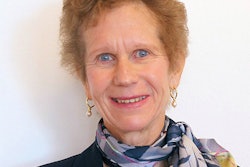Dear AuntMinnieEurope Member,
Ranga Yogeshwar is a well-known figure in German-speaking science media circles. Recently, he's made some interesting observations about artificial intelligence (AI), particularly concerning the importance of data validation.
Being a German scientist of some repute himself, the Maverinck has been following this debate closely. You can read his latest column in the Artificial Intelligence Community.
In healthcare systems based on reimbursement, many imaging examinations are unnecessary. That's the view of Prof. Paul Parizel, past president of the European Society of Radiology, who thinks Belgium is one of the worst offenders. He's also worried that radiology is becoming more about business than medicine.
All too often, prompt action and efficient communication are lacking when a serious unexpected finding is unearthed on a patient scan, a major new U.K. report has concluded. The authors have identified cases of delayed imaging results, variable or nonexistent alert and acknowledgement systems, complicated patient follow-up procedures, and varied IT and administrative support. Head over to the CT Community.
Breast MRI continues to make clinical progress. The technique can improve the depiction of ductal carcinoma in situ components, and MR-guided needle biopsy or MR-guided surgery may lead to better outcomes, according to an original article in the European Journal of Radiology.
Meanwhile, in a novel cervical cancer study, researchers combined FDG-PET with a T2-weighted MRI voxel segmentation method and gray-level adjustments to significantly improve accuracy, sensitivity, and negative predictive value, compared with MRI alone, in diagnosing and staging parametrial infiltration. Visit the Molecular Imaging Community.
How exactly can elastography help in the battle against breast cancer? Authors in BJR have addressed this important question, and their analysis is well worth a close look in the Women's Imaging Community.



















